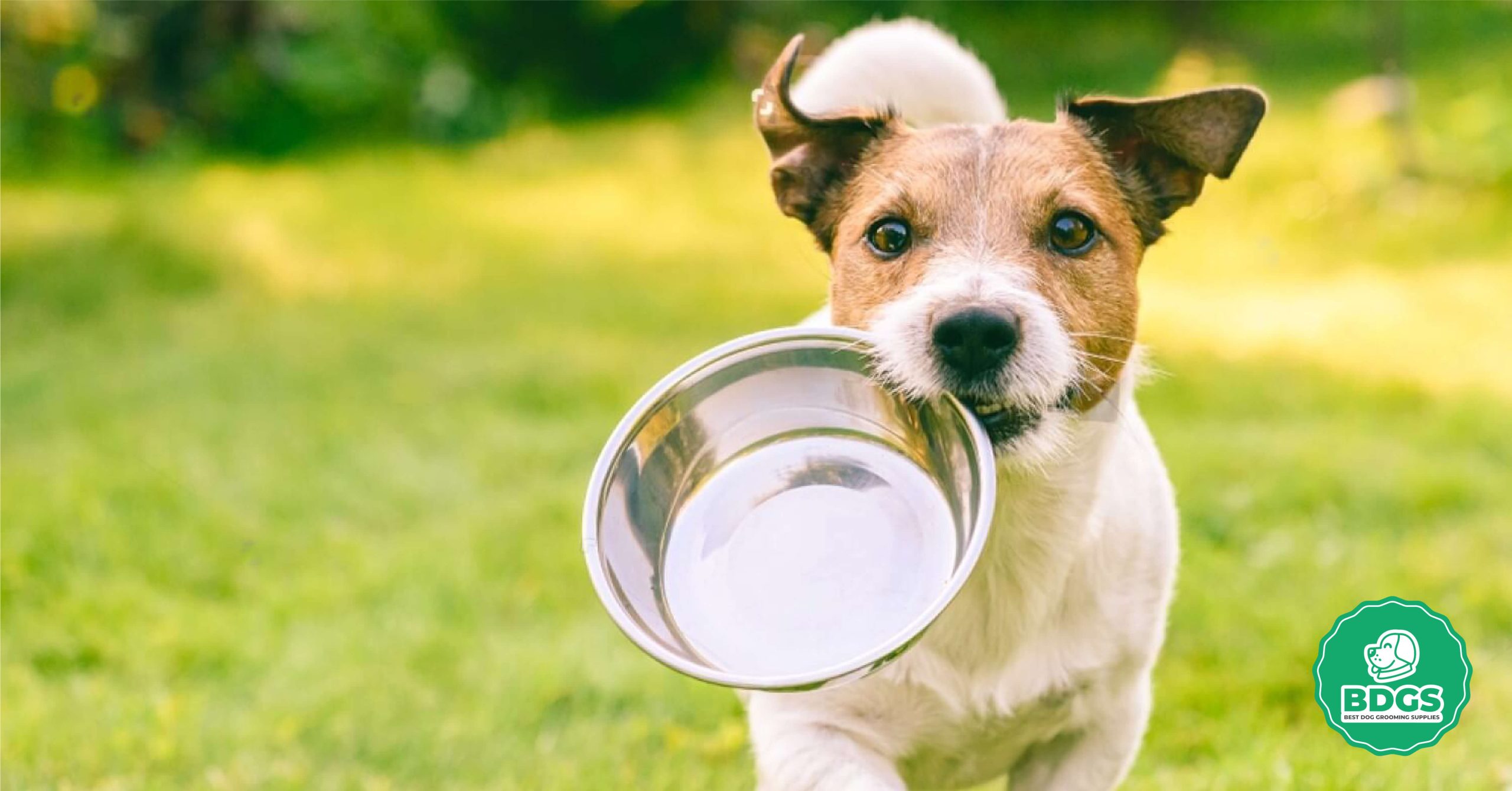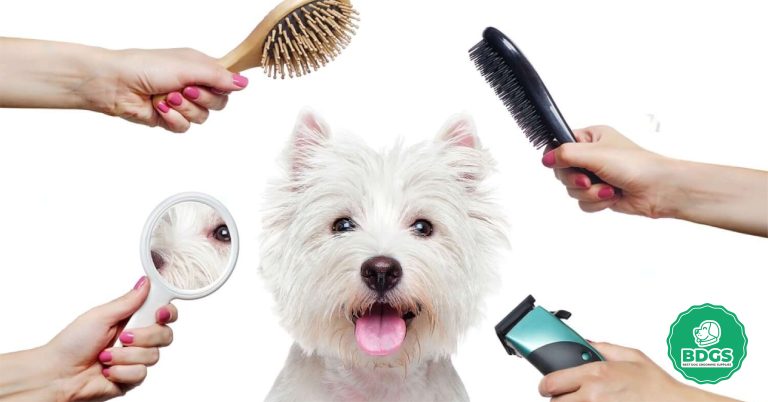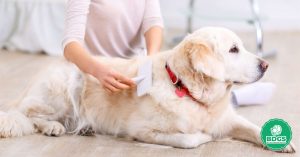When giving boil chicken for dogs a healthy and balanced diet, boiled chicken is a great choice. Cooking chicken for dogs is an easy and effective way to ensure they get the nutrients they need to stay healthy and grow.
Boiling chicken can be a healthy treat for dogs, whether you want to change their meals or give them something that won’t upset their stomachs.
Boil chicken for dogs has many benefits, like being easy to process, low in fat, and high in protein, which is good for their muscles and general health.
Also, mixed with other dog-friendly foods makes an excellent base for making well-balanced meals. But knowing how to prepare and cook chicken correctly is essential to avoid health risks.
In this guide, we’ll show you how to boil chicken for dogs, ensuring they get a healthy and tasty meal. Your dog will wag its tail happily when it sees this delicious and nutritious meal.
Explanation of boiling frozen chicken for dogs
Boiling frozen chicken for dogs is a safe and easy way to give them a meal that is both healthy and tasty. You can cook the cold chicken if you have little time or need something quick and easy. The process is easy, ensuring that your dog gets a well-cooked meal that is easy to swallow.
Put the frozen chicken in a pot of water and bring it to a slow boil. Boiling times can vary, but small pieces without bones usually take 15 to 20 minutes, and up to 30 minutes for more significant cuts. Always ensure the temperature inside the chicken hits 165°F (74°C) to kill any dangerous germs and ensure it is safe to eat.
Once the chicken is cooked, let it cool down before giving it to your pet. You can feed it with boiled chicken or mix it with regular food or veggies to provide them with more variety and nutrition. Remember not to add dangerous sauces, salts, or seasonings to the chicken since dogs have different dietary needs than people. Boiling frozen chicken for dogs is an easy, cheap way to give them a healthy, tasty treat that will make their tails wag happy.
Importance of ensuring safe and nutritious food for canine companions
Safe and healthy food for our dogs is most important because it directly affects their general health, happiness, and lifespan. Like people, dogs need a healthy diet to grow well and keep their bodies and minds in good shape.
If you give them safe food, they won’t get sick or have stomach problems. By giving them healthy, high-quality food, we help their immune system, promote good nutrition, give them more energy, and make them more active.
Nutrition is essential for many parts of a dog’s life, from a puppy’s healthy growth and development to an older or senior dog’s muscle mass and joint health. Their hair, teeth, and organs must work well to get the right mix of vital nutrients, vitamins, and minerals.
A good diet can also help with some health problems and stop dogs from getting fat, which is a common problem. Overweight dogs are more likely to get joint pain, heart problems, and diabetes, among other health problems.
Ultimately, every pet owner should take seriously their duty to feed their dogs safe and healthy food. It ensures they are happy and healthy and improves our special bond with our pet friends. It lets them live long, busy, and happy lives with us.
Is Boiling Frozen Chicken Safe for Dogs?
Addressing Concerns about Boiling Frozen Chicken:
- Food safety concerns: When you boil frozen chicken, you must ensure it’s cooked throughout to kill dangerous germs like salmonella or campylobacter. Using frozen chicken makes it more likely that the chicken won’t cook evenly, leaving some parts raw and possibly unsafe to eat.
- Nutrient Loss: Some nutrients can be lost when chicken is frozen, especially water-soluble vitamins like B and C. This problem might worsen if you boil cold chicken, making the meat less healthy overall.
Mitigating the Risks of Using Frozen Chicken:
- Thawing Properly: Frozen chicken must be thawed before it can be safely boiled. The best ways to thaw frozen food are in the refrigerator, in cold water, or by using the defrost setting on the microwave. Don’t let food thaw at room temperature to stop germs from growing.
- Use Fresh Chicken When Possible: Whenever you can, choose fresh chicken over frozen. Fresh chicken is less likely to have germs that can make you sick and keeps more nutrients than frozen chicken.
- Proper Cooking Temperature: Always use a food thermometer when boiling chicken to ensure the temperature inside hits 165°F (74°C). It kills any germs that could be dangerous, so the chicken is safe to eat.
- Boil Sufficiently: Make sure to boil the chicken for the amount of time recommended for its size and cut it so that it cooks evenly all the way through.
- Avoid Cross-Contamination: To avoid cross-contamination, use good cleanliness when handling raw chicken. After touching raw meat, wash your hands, tools, and surfaces well.
- Balance the Diet: Boiled chicken can be a healthy part of a dog’s diet, but it shouldn’t be the only thing they eat. Make sure the food is well-balanced by adding other forms of protein, veggies, and the right vitamins, as suggested by a doctor.
Following these safety steps and cooking instructions can significantly reduce the risks of using leftover chicken. It will help you feed your dog a safe and healthy meal. It would help to prioritize your dog’s health and well-being when making food for it.
Preparing Frozen Chicken for Boiling
Selecting Boneless and Skinless Frozen Chicken Breasts or Thighs:
- Check the quality: Choose frozen chicken that says “boneless” and “skinless” on the box for ease of use and to avoid any possible dangers that come with bones or skin. Look for a company that is known for making good items.
- Packaging: Make sure the chicken is still in its original packaging, and there are no signs of damage, tears, or frost. Only buy chicken if the package has been opened or the chicken looks clean.
- Inspection: Look for a sticker that says “USDA Inspected” on the package. It means that the chicken has met standards for safety and quality.
- Date Frozen: Look at the “best by” or “use by” date on the package to ensure the chicken is still good.
Properly Defrosting Frozen Chicken:
- Thawing in the fridge: The safest way to thaw frozen chicken is in the refrigerator. Put the chicken on a plate or pan in the fridge to melt slowly. This method makes sure that the temperature for freezing is stable and safe.
- Cold water Thawing: If you need to thaw the chicken faster, put the package in cold water while it’s still covered. To keep the water at a safe temperature, change it every 30 minutes.
- Microwave Thawing: If you don’t have much time, use the thawing setting on your microwave to thaw the chicken. Be careful not to cook the chicken while it’s defrosting in the microwave.
Ensuring Chicken is Suitable for Dog Consumption:
- Plain and Unseasoned: Ensure the chicken has no flavors, spices, salt, or sauces that could be bad for dogs. The best food for dogs is plain, boiled chicken without any seasoning.
- Proper Cooking: Boil the chicken until its body temperature hits 165°F (74°C) to kill any germs and ensure it is safe for your dog to eat.
- Boneless and Skinless: Make sure the chicken has no bones or skin to keep people from choking and lower the risk of pancreatitis, which can be caused by high-fat skin.
- Vet Approval: Before giving your dog any new food, you should talk to your vet to ensure it’s good for their health and meets their dietary needs.
By following these steps, you can confidently choose, thaw, and cook frozen chicken for your dog, knowing that it is safe, healthy, and sound for them to eat. When making fresh food for your dog, putting its health and well-being first is essential.
Boiling Frozen Chicken for Dogs
Choosing the Right Pot and Water Amount:
- Pot Size: Choose a pot that is big enough to hold the leftover chicken without being too full. It ensures the chicken cooks correctly, and the water flows nicely.
- Material: Use a stainless steel, metal, or porcelain pot. Don’t use pots with non-stick coverings if you want to boil something at a high temperature.
- Water Amount: Add enough water to the pot to cover the cold chicken completely. A few inches of space should be left above the chicken so the water doesn’t boil over.
- Placing the Frozen Chicken in the Pot:
- Remove Packaging: Take the frozen chicken out of its package and put it straight into the pot. Throw away the packaging the right way.
- Single Layer: Put the chicken pieces in the bottom of the pot in a single layer. If you want to keep the chicken in a single layer while cooking a lot of it, you may need to cook it in batches.
Bringing the Water to a Boil:
- Stovetop: Set the pot with the frozen chicken over medium-high heat on the range.
- Cover the Pot: Putting a lid on the pot will help the water boil faster.
- Wait for Boiling: Let the water reach a rolling boil. It is when big bubbles keep popping on the water’s top.
Boiling Time and Ensuring Thorough Cooking:
- Boiling Time: How long it takes to boil leftover chicken depends on the pieces’ size and thickness. Most of the time, raw chicken breasts or legs take about 15 to 30 minutes.
- Use a Food Thermometer: Use a food thermometer to check the temperature inside the chicken to ensure it is cooked all through. When the temperature inside the chicken gets to 165°F (74°C), it is safe to eat. To get a correct measure, put the thermometer in the most significant part of the chicken.
- Confirm No Pink Meat: Cut into the chicken’s most significant part to ensure no raw or pink meat is inside. If any meat is still pink, boil it until fully cooked.
Following these steps, you can boil frozen chicken safely and effectively, ensuring it is fully cooked and ready to be used in different meals or given to your dog as a healthy and tasty treat.
Checking if the Chicken is Fully Cooked
Importance of Fully Cooking the Chicken for Safety:
Cooking chicken is essential for safety because it eliminates the chance of getting sick from germs like salmonella and campylobacter. These bacteria can be found in raw or uncooked chicken, and they can cause significant stomach problems like vomiting, diarrhea, and even more severe issues, especially in people with weak immune systems, young children, and the elder.
When chicken is cooked well, its internal temperature hits 165°F (74°C), which kills the most dangerous germs and makes the chicken safe to eat. By cooking the chicken all the way through, you keep yourself and others from getting sick. It is suitable for the health of everyone who eats the meal.
How to Test the Chicken for Doneness:
A food thermometer is the most accurate way to tell if the chicken is done. Put the gauge in the chicken’s thickest part, away from the bones, and ensure it hits the middle of the meat. When the temperature inside the chicken reads 165°F (74°C), it is done cooking and safe to eat. If the temperature is lower than you want, keep cooking until you hit the right temperature.
Additional Cooking Time, if Necessary:
If the chicken hasn’t hit 165°F (74°C) on the food thermometer, it needs more cooking time. Keep cooking the chicken until it reaches the right temperature inside. Be careful not to boil the chicken, which could make the meat drier and less tasty.
Remember that cooking times can change depending on the size and thickness of the chicken pieces, so it’s essential to use the food thermometer to figure out when the chicken is fully cooked and safe to eat.
By cooking the chicken all the way through and using a food thermometer to check if it’s done, you can make sure that you, your family, and your dogs will have a safe and tasty meal. Taking these safety measures shows that you are a responsible cook who cares about the health and well-being of everyone who eats the chicken dish.
Cooling and Storing Boil Chicken for Dogs
Allowing the Chicken to Cool before Serving:
Follow these steps to cool the chicken before you serve it:
- Remove from Heat: Turn off the fire and carefully remove the pot with the boiled chicken from the heat source.
- Let it Rest: Let the chicken sit in the hot water for a few minutes to cool down.
- Transfer to a Plate: Move the chicken pieces to a clean plate or cutting board using tongs or an angled spoon. It lets the chicken drain off any extra water and keeps it from sitting in hot water.
- Let it Cool: Give the chicken about 5 to 10 minutes to cool down at room temperature before giving it to your dog. It should be cool enough to hold without getting too hot.
Properly Storing to Maintain Freshness and Safety:
Follow these steps to store boiled chicken the right way:
- Refrigeration: Once the chicken has cooled to room temperature, put it in a sealed container or a plastic bag that can be closed again.
- Refrigerate Promptly: Put the chicken in the fridge as soon as it has cooled down. Put the chicken in the refrigerator as soon as it has cooled down. Please don’t leave it out for a long time at room temperature because that can help bugs grow.
- Use within 3-4 Days: Boiled chicken can be kept in the fridge for 3–4 days without getting impaired. You might want to freeze it if you don’t use it now.
- Freezing Option: If you want to keep the boiled chicken longer, you can freeze it. If you put the cooked chicken in a freezer-safe jar or bag, you can keep it in the freezer for up to two to three months.
- Thaw Safely: When ready to use frozen boiled chicken, put it in the fridge or use the defrost setting on your microwave. Don’t let food thaw at room temperature to stop germs from growing.
Recommended Portion Sizes for Dogs:
How much-boiled chicken a dog gets depends on size, age, exercise, and general health. Talk to a vet to find out how much your dog should eat. As a general guideline:
- Treats: Break up boiled chicken into small, bite-sized pieces to use as treats or training prizes. These amounts should be small so you don’t eat too many calories.
- Meal Toppers: If you use boiled chicken as a meal topper, mix a small amount (about 10–20% of their average meal) with their regular dog food to add variety and taste.
- Balanced Diet: Remember that boiled chicken should not be your dog’s only food source. It’s best to give it to them as a treat or to add to their usual food.
By following these rules for how to cool, store, and serve boiled chicken for dogs, you can make sure that it stays fresh, is safe, and can be a healthy part of their diet. Always put your dog’s health first, and talk to a vet for personalized tips and suggestions about what they should eat.
Feeding Boil Chicken for Dogs
Using Boiled Chicken as a Treat or Part of Regular Meals:
- Treats: Break the boiled chicken into small pieces that are easy to eat and use them as treats or prizes during training sessions or as rare snacks to show love.
- Meal Topper: As a meal topper, add a small amount of boiled chicken to your dog’s usual food (about 10–20% of the total meal). It can make the food taste better and get them to eat if they don’t like eating.
- Homemade Dog Food: Chicken that has been boiled is often a key ingredient. Mix it with cooked veggies, rice, and a source of good fats to make a balanced and healthy meal for your dog.
Monitoring the Dog’s Reaction to the New Food:
- Observe Behavior: When you start giving your dog boiled chicken, watch how he acts. Look for signs that the person is enjoying and interested in the food.
- Watch for Digestive Issues: Watch how often and well they use the bathroom. Changes in the content of your stools, diarrhea, or vomiting may indicate an insufficient response.
- Check for Allergic Reactions: Look for signs of allergies, such as swelling, redness, hives, or ear infections. New foods can cause an allergic reaction.
- Consult a Vet: If you notice any changes or reactions that worry you, you should talk to your doctor immediately for a complete evaluation and advice.
Identifying Food Allergies or Sensitivities:
- Elimination Diet: If you think your pet might have a food allergy or sensitivity, your vet may suggest an elimination diet. For about 8 to 12 weeks, you can only feed your dog boiled chicken and a single food source, like rice or sweet potatoes.
- Reintroduction: After the time for removal, other ingredients are put back in slowly to see if there are any reactions. With this method, you can find toxins.
- Veterinary Examination: Your vet can do blood tests or skin allergy tests to learn more about possible allergens and determine the best course of action.
- Record Keeping: Write down in detail any signs or changes you notice during this process. It will help your vet make a correct evaluation.
It would always help to put their health and well-being first when adding new things to your dog’s diet. Boiling chicken can be a healthy and tasty addition, but you need to watch how they react to ensure it meets their needs. If you have any worries or questions, you should ask your doctor for help.
Additional Tips and Considerations
Avoiding Harmful Chicken Parts and Additives:
- Boneless and Skinless: Always use boneless and skinless chicken when boil chicken for dogs. Chicken bones can break up and cause choking, and the skin has a lot of fat that can cause stomach problems or gallstones.
- No Seasonings: Ensure the boiled chicken has no flavors, spices, salt, or other additions. These things can be bad for dogs and may give them stomach problems or other health problems.
Using Boiled Chicken as a Healthy Alternative to Commercial Treats:
- Portion Control: Use boiled chicken as a low-calorie treat for your dog, especially if they want to lose weight. Cut the chicken into small pieces to keep it from giving too much food.
- Training Rewards: The delicious taste of boiled chicken makes it an excellent choice for rewarding good behavior during training. Give your dog small chicken treats when it does what you ask or acts well.
- Homemade Treats: Use boiled chicken as the main item to make homemade treats for your dog. Mix it with pumpkin puree or oats, which are safe for dogs, to make it more nutritious.
Consulting a Veterinarian for Specific Dietary Needs or Concerns:
- Individualized Diet: Each dog has different food needs based on age, breed, amount of exercise, and any health problems it already has. Talk to your vet to come up with a food that meets all of your dog’s needs.
- Food Allergies or Sensitivities: If your dog has had food allergies or sensitivities, your vet can help you find possible causes and suggest other items that might work better.
- Balanced Diet: Make sure that the boiled chicken is part of a balanced diet that meets your dog’s nutritional needs. Your vet can tell you how to mix and match different things to make a balanced meal plan.
- Health Conditions: If your dog has a health problem, like heart disease or diabetes, your vet can advise on the best foods and sizes to take care of their health.
Remember that boiled chicken can be a healthy addition to your dog’s diet, but it shouldn’t replace commercial dog food that is full and balanced. Always put your dog’s health first and talk to a vet for personalized tips on what to feed your dog. Working with your vet will ensure your pet friend gets the best food for a happy, healthy life.
Conclusion
Boiled dog food is healthful and nutritious for our pets. As we’ve seen, cooked chicken is easy to digest, low in fat, and full of proteins their bodies require. It enhances their diet. Even picky eaters will enjoy it as a snack or a nutritious meal supplement.
Our dogs can get all the nutrients they need from well-balanced cooked meals made with boiling chicken. However, proper meal preparation and cooking are crucial for pet health.
To avoid infections and other problems, the chicken should be thawed safely, chopped without bones or skin, and cooked to 165°F (74°C). Preventing harmful additions and spices ensures clean dog food.
As pet owners, we must prioritize our pets’ well-being. Healthy food shows love. We can keep our dogs healthy and live longer by consulting with vets about their diets and treating any health issues.
Let’s promise to feed our pets well and with love. We cook chicken carefully to make it safe, healthy, and tasty for our dogs. It improves their life and increases our friendship. We can help our furry family members live long, happy, and healthy lives.
Frequently Asked Questions
Follow these steps to boil plain chicken for dogs:
Use chicken breasts or legs without bones or skin for safety and protein.
Put the chicken in a pot and cover it with enough water to cover it completely.
Over medium-high heat, bring the water to a boil.
Turn the heat down to a simmer and let the chicken cook until it gets an internal temperature of 165°F (74°C).
Take the chicken out of the pot, let it cool, and cut it into small pieces that dogs can eat.
If your dog has diarrhea, chicken that has been boiled can be a gentle and easy-to-digest choice. Follow the same steps as you would for boiling plain chicken, and ensure it reaches the correct body temperature.
After cooking, you can remove some fat to make it easier on your dog’s stomach. You could also give them plain white rice and boiled chicken to help their stools get firmer.
There are many perks to boil chicken for dogs. It ensures the chicken is cooked all the way through, killing any dangerous germs in raw or uncooked meat. Boil chicken for dogs makes it easy to digest and is accessible on their stomachs.
It makes it an excellent choice for dogs with sensitive stomachs or healing from stomach problems. In addition, it is a good form of energy for your dog’s health and well-being.
Even though boiled chicken can be a healthy addition to your dog’s diet, it shouldn’t be used instead of a commercial dog food that is full and balanced. Dogs can’t get all the essential nutrients they need from boiled chicken.
Feeding your dog cooked chicken every day may get only some of the nutrients it needs. Instead, use boiled chicken as a treat or top your dog’s food, and talk to your vet to ensure your dog’s diet is well-balanced and fits their needs.
The time it takes to boil chicken for dogs depends on how big and thick the pieces are. Generally, chicken breasts or legs without bones or skin take about 15 to 30 minutes to cook. When the temperature inside the chicken gets to 165°F (74°C), it is safe for your dog to eat. Check the temperature with a food thermometer to ensure it’s done before serving it.
Dogs can eat different parts of boiled chicken as long as they don’t have bones or skin. Here’s what they can eat without getting sick:
Boneless Meat: Dogs can eat meat from boiled chicken with no bones. Remove any bones to keep your child from choking or splintering.
Meat Without Skin: Skinless chicken is safe for dogs and reduces the chance that they will overeat fat, which can cause stomach problems.
White Meat: Dogs can eat chicken breast and chicken leg meat, both good sources for lean protein.
Meat Shreddings: To make eating more accessible, you can break the boiled chicken into small pieces.





